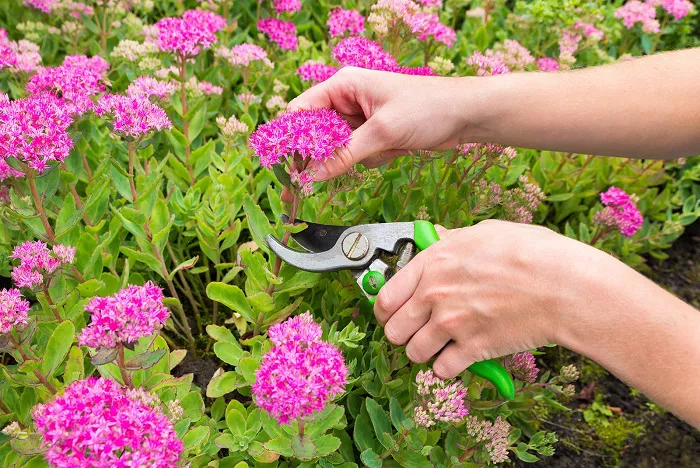As the vibrant hues of autumn paint the landscape, gardeners often find themselves reaching for the shears. However, not all plants should be pruned in the fall. Understanding which plants to leave untouched can enhance their resilience, preserve their beauty, and support local wildlife. In this article, we will explore the reasons behind this gardening practice and identify key plants that should remain untrimmed during the fall season.
Why Not Cut Back?
The Natural Cycle of Plants
Nature has its own rhythm, and many plants have evolved to survive through winter without human intervention. Cutting back certain plants in the fall can disrupt their natural cycle. For example, perennials often store energy in their stems and leaves, which they use to survive the winter and regrow in spring. By leaving these plants intact, you allow them to complete their natural process.
Wildlife Habitat
The fall season is crucial for wildlife. Many plants provide shelter and food for birds, insects, and small mammals. Seed heads from flowers and the structure of plants offer valuable resources that help these creatures survive the winter. By not cutting back, you create a more welcoming environment for local wildlife.
Disease and Pest Prevention
Pruning in the fall can leave plants vulnerable to diseases and pests. Cuts made during this time may not heal properly before winter, allowing pathogens to enter. Additionally, some plants have natural defenses that are compromised when they are cut back too early.
Perennials to Leave Alone
Ornamental Grasses
Ornamental grasses are a staple in many gardens. Their graceful plumes and sturdy stems add texture and movement. In the fall, these grasses turn golden and provide visual interest. Cutting them back removes this beauty and can also damage the root system. Instead, wait until early spring to trim them back.
Coneflowers (Echinacea)
Coneflowers are not only beautiful but also beneficial. Their seed heads are a favorite of birds like goldfinches. Leaving coneflowers untrimmed allows these birds to feed on the seeds throughout the winter. Additionally, the plant’s structure provides shelter for insects.
Black-Eyed Susans (Rudbeckia)
These cheerful flowers are a symbol of late summer and fall. Their seeds are a valuable food source for birds. The sturdy stems also provide support for other plants and create a microhabitat for insects. Wait until spring to cut them back to ensure they continue to support wildlife.
Bee Balm (Monarda)
Bee balm is known for its vibrant flowers that attract bees, butterflies, and hummingbirds. In the fall, the plant’s seed heads remain and provide food for birds. Cutting back bee balm in the fall can remove this valuable resource and leave the plant more susceptible to winter damage.
Shrubs and Trees to Avoid Pruning
Butterfly Bush (Buddleia)
Butterfly bushes are a favorite among gardeners for their ability to attract pollinators. While they can be pruned, it is best to wait until early spring. Pruning in the fall can remove buds that will produce flowers in the spring and leave the plant vulnerable to frost damage.
Hydrangeas
Hydrangeas are a popular choice for their large, showy blooms. Some varieties, like the panicle hydrangea, can be pruned in the fall, but others, such as the mophead and lacecap hydrangeas, should be left alone. These varieties bloom on old wood, and fall pruning can remove the buds that will produce flowers in the spring.
Serviceberry (Amelanchier)
Serviceberry trees and shrubs are known for their beautiful spring blooms and edible berries. Pruning in the fall can disrupt the plant’s natural growth cycle and leave it more susceptible to winter damage. It is best to wait until late winter or early spring to prune these plants.
Dogwood (Cornus)
Dogwoods are beloved for their ornamental value and ability to attract wildlife. Their branches provide shelter for birds and small mammals. Pruning in the fall can remove valuable habitat and leave the plant vulnerable to disease. Wait until late winter to prune dogwoods to ensure they remain healthy and attractive.
Herbs and Vegetables to Leave Intact
Rosemary
Rosemary is an evergreen herb that can survive the winter in many climates. Its woody stems and leaves provide a pleasant aroma and can be used in cooking throughout the winter. Cutting back rosemary in the fall can damage the plant and reduce its ability to survive the winter.
Sage
Sage is another hardy herb that can withstand cold temperatures. Its leaves and stems provide a valuable source of food for wildlife and can be used in the kitchen. Leaving sage untrimmed in the fall allows it to continue growing and providing benefits.
Brussels Sprouts
Brussels sprouts are a cool-season vegetable that can be harvested late into the fall. The plant’s sturdy stalks and leaves provide protection for the sprouts. Cutting back the plant in the fall can reduce the harvest and leave the plant more susceptible to frost damage.
Kale
Kale is a hardy vegetable that can survive frost and even improve in flavor after a cold snap. Its large leaves provide a visual interest in the garden and can be harvested throughout the winter. Leaving kale untrimmed in the fall ensures a continuous harvest and provides a valuable food source for wildlife.
Conclusion
As the fall season unfolds, it is important to approach gardening with a thoughtful perspective. Not all plants benefit from fall pruning. By understanding the natural cycles of plants and the needs of local wildlife, gardeners can make informed decisions. Leaving certain plants untrimmed in the fall enhances their resilience, supports biodiversity, and preserves the beauty of the garden through the winter months.


